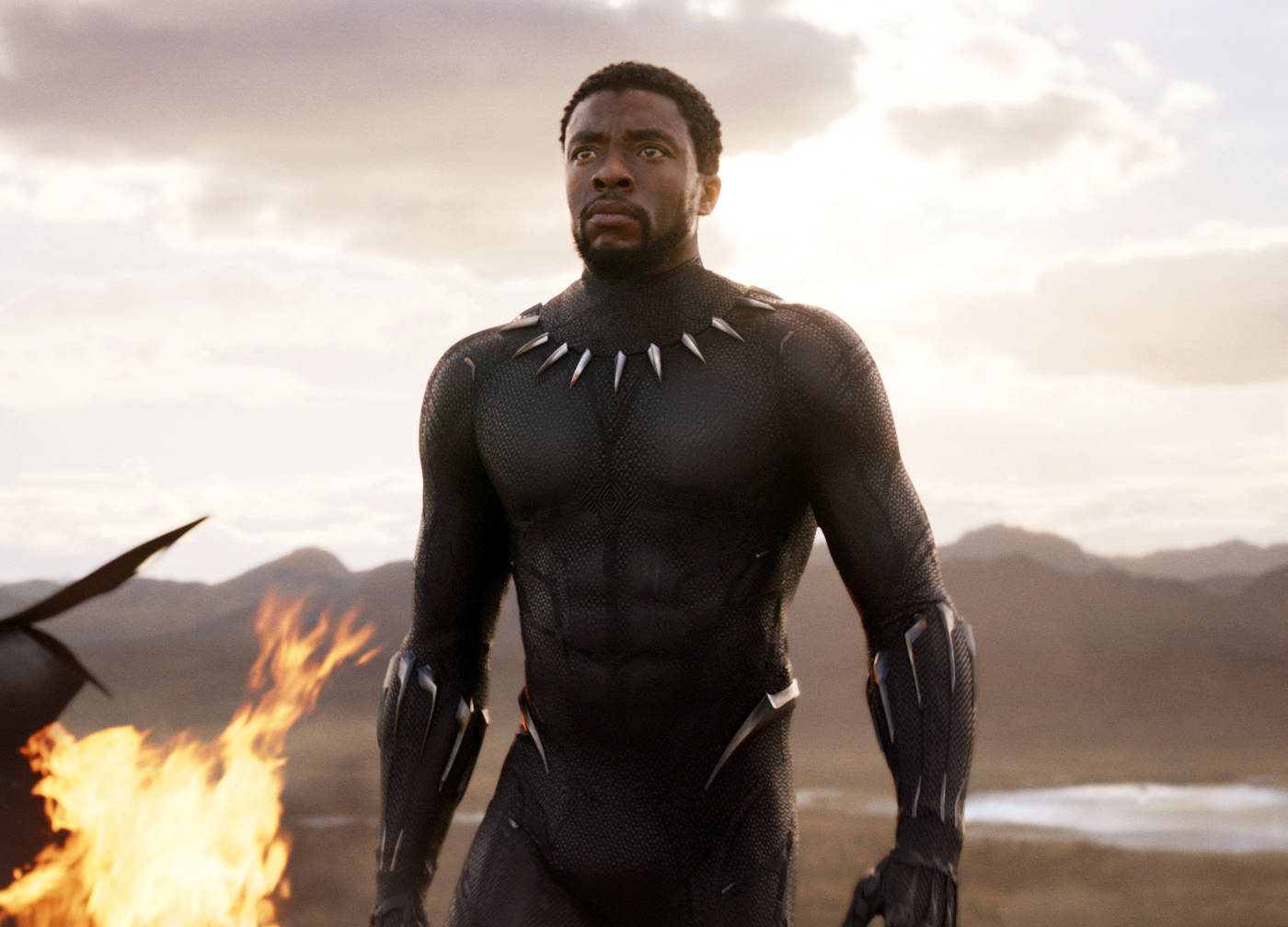“Black Panther”
Marvel Studios
2 hours, 14 minutes
On the weekly radio program I co-host, my partners are constantly needling me for being a superhero movie fan. As though, somehow, I’m the outlier and that all real cinema enthusiasts have left that sad genre behind.
Well, “Black Panther” was released this week to the highest February box office opening ever, and the fifth-highest opening of any film ever. It’s also, at just a week into it’s run, the highest grossing film ever by a black director. So, apparently other people are still into this genre. Oh, and the critics love it, too.
Following in the tradition of “Iron Man,” “Ant-Man” and “Doctor Strange,” Marvel Studios is managing to make huge profits off of what would normally be considered tier 2 and 3 superheroes. “Black Panther,” though not nearly as popular a comic as “Spider-Man” or “The X-Men,” nevertheless has the cachet of being one of the first black superheroes, and certainly the first to present a wholly African feel to the character. In this day and age, when traditionally disenfranchised groups are finding inroads into mainstream popular culture, it’s no surprise that the superhero movie would be the next big conquest.
Black Panther, the patron hero of the nation of Wakanda, was officially introduced in “Captain America: Civil War,” and this film follows in that movie’s wake. Though not an origin story, “Black Panther” does take a few moments at the beginning to bring the audience up to speed in a beautifully animated historical exposition sequence.
Wakanda is a tiny African nation whose very existence, one could argue, is the major theme of this movie. Millions of years ago, a strange meteor, composed of the uniquely powerful mineral Vibranium crashed into middle of the African continent. It gradually reworked the land in it’s image, giving rise to a flower that, when ingested, imbues a person with great strength and agility.
Combined with Vibranium’s nearly indestructible characteristics, the people who gradually began to settle in the location of the meteor found themselves well off, as it were. They decided, and this is where we get to the theme of the movie, to horde their fabulous mineral and to never involve themselves in the travails of the outside world. Vibranium allowed Wakanda to thrive technologically, building a gleaming, futuristic society teeming with thriving African culture, art, and music. But the country remained completely isolationist, never touched by colonization, colonialism, or exploitation from Europe, going even so far as to camouflage themselves from the outside world.
It was basically a nationalist utopia, but nothing gold can stay, nor should it, the movie seems to suggest.
In the rest of the world, people of color have it hard. And hard situations always breed extremists. Enter Erik Killmonger, but a boy when his father was murdered. Erik dreams of visiting the magical country his father, a Wakandan spy, had told tales of, but mostly he has grown angry and bitter at the hardships he sees around him. Wakanda, he reasons, could right these wrongs. Wakanda could spur a world-wide revolution. Wakanda could rule the world, and Killmonger, son of an exiled Wakandan prince, is in the perfect position to ride that wave to the top.
This movie has everything a typical Marvel movie does, and more. Quips, relationship trouble, amazing CGI, and a great script, but it has something more. This film also has an authenticity to it that has never really been a part of the genre before. Amazing costumes and a stellar soundtrack by Kendrik Lamar are, of course, one element of that, but the film brings a kind of socio-economic weight that most movies like this one don’t feel the need to drive into. The struggle that T’Challa (The Black Panther and King of Wakanda) goes through is fascinating.
If I had a complaint, it would be a logistical one. Wakanda feels like it is more of a city-state than a full-on country. The entire country doesn’t appear to be more than a dozen square miles. How are they maintaining the population? How do they build anything? It’s not all made of Vibranium. Where do they get money? These issues are logistical and more than a little nitpicky, but it’s OK. Superhero movies, in general, have continuity and logic flaws in them, but this film makes up for all that by being simply gorgeous to look at. I absolutely loved the costumes and the production design, as did my 10-year-old son. The look of this film makes it.
The movie is long, and has at least one kind of dumb looking fight scene, but it’s also a powerful and confident entry into a genre that is mostly dominated by white men. Where will they go from here? Who knows, but with a response like the one this film is getting, you can be assured that we’ll be seeing more of this character in the years to come. I’m all in!
Grade: A
“Black Panther” is rated PG-13 for violence, adult themes, and brief language.
Chris Jenness is an art teacher, graphic designer, artist and movie buff who lives in Nikiski.

